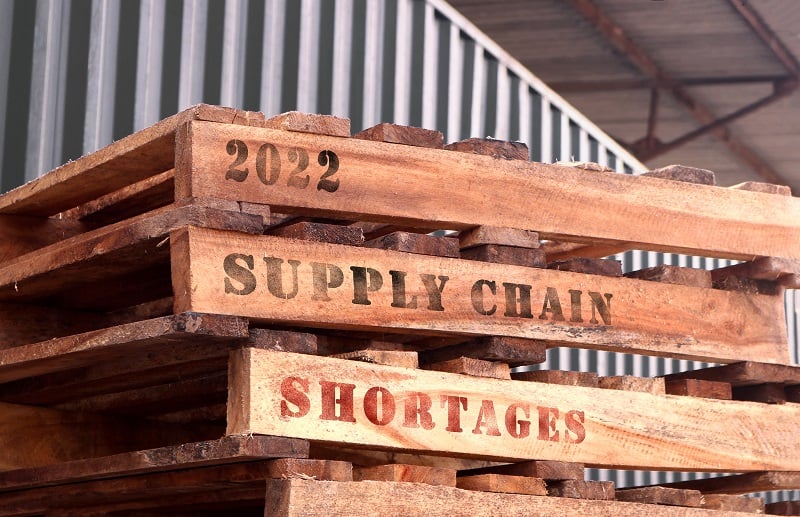The intent of this Think Tank is to explore and understand several of the major issues the supply chain is dealing with. We also want to learn how to best support our members from an information and advocacy perspective.
International Fresh Produce Association (IFPA) is continuing the Think Tank series on important science and technology issues as a way to connect stakeholders, guide discussions and learnings, and advocate for appropriate outcomes.
The Think Tanks cultivate relationships and explore ways to break down silos and build bridges for issues facing you, your business, and our industries. They are designed to unlock new and bold thinking to support companies and leaders as they frame future plans and reimagine how to work together to grow our industries. They bring people together to build relationships, understanding, connection, and inspiration to create sustainable changes that serve everyone.
State of the Supply Chain
The Supply Chain Think Tank began with participants outlining several of the major issues the supply chain is dealing with, including a shortage of labor, container misalignment, an imbalance between supply and demand, resource shortages, delayed timelines, and inflation, to name just a few. There was widespread agreement that there is no immediate end in sight for many of these issues, and the war in Ukraine will only exacerbate the situation.
Managing a successful supply chain requires ample planning, and the think tank participants consider themselves planners by nature. But with so much instability and unprecedented developments throughout the supply chain, they haven’t been able to forecast ahead. There is simply no frame of reference for many of the current issues they’re experiencing, including rapidly changing and unprecedented consumer buying/demand patterns.
Labor shortage
Many participants pointed to a shortage of labor as one of the biggest issues. There are not enough workers at each point in the supply chain, namely those that ship containers, truck drivers, warehouse workers, manufacturing workers, and even those in sales and retail. There was a consensus that these issues will only continue and have the potential to get worse in the coming years. It was made clear that our supply chain will ultimately reflect a new normal, even when some issues are resolved.

Rising costs
Despite rising rates and inflation, companies are considering cost to be a secondary focus, with the main focus on continuing to get products from point A to B in order to generate revenue. Unfortunately, the increased costs are passed down to consumers.
Lack of collaboration
The common refrain was that increased communication and collaboration are key to address many of the current supply chain issues. It’s never been more crucial to develop new relationships and maintain current relationships with partners throughout the supply chain.
How Can We Address Supply Chain Issues?
The Think Tank prompted discussion on participants’ defensive and offensive strategies to mitigate the current supply chain issues. Defensive strategies focus on immediate strategies that highlight what’s currently working for individual participants and what the key takeaways are. Offensive strategies include strategies where participants have built plans and practices or new habits that have helped address issues.
Defensive strategies
Build relationships and connect with partners
“When talking about the importance of relationships, it’s not just with operations and logistics and at the executive level, but also at the information technology level.”
The past couple of years have revealed the state of relationships in the supply chain. A participant noted they have prioritized building new relationships throughout the supply chain, including developing more commitments in the trucking space. Additionally, that same participant noted they are doing more contracts with the vendor community to ensure they have a supply when needed and, in turn, giving vendors assurance that they’re going to commit to them. It was noted that it’s important now more than ever to get assurance that partners will commit to you and stay with you.
“Building better and stronger commitments in the trucking world and trying to drive price with the assurance that they’re going to get work from us, has helped us control some market dynamics.”
There is a mismatch in alignment within carriers, with different divisions and types of structures. The bottom line is that while local sales reps are important, investments must be made by those responsible to get up the management chain and develop stronger relationships with carriers. Those that don’t have relationships are left behind. The same amount of time that organizations invest in building relationships like they would do in every other facet of their business, they must do with trucking, carriers, warehouses, etc.
“You look back five years ago, when capacity was abundant, everyone talked about how can we be the best carrier, but today, we’re talking about being the customer or the shipper of choice. How do you get the carrier to say ‘yes’ to your business versus one of your competitors?”
Open the lines of communication
Many participants spoke to the importance of open and consistent communication throughout the supply chain. One participant noted that people are generally trying to solve complex problems without talking with the right people who understand the issues. The lines of communication need to be opened throughout the supply chain in order to foster knowledge and info-sharing.
Build better tracking capacity
To build resiliency in the supply chain, one participant’s team had to reassess their risk profile on how they work with external partners versus their own internal assets. As a result, they have built up more tracking capacity in their own network, allowing them to move goods more efficiently and to make money.
Negotiate costs down
With an imbalance in the market, and in the balance of power, one participant pointed out that larger companies can rely on their strong strategic sourcing departments to negotiate down costs. The participant gave an example of an issue their company was experiencing with securing enough trailers and said that they relied on a relationship they’ve had with a partner for years, emphasizing that it’s important to take time to develop and maintain relationships instead of just concentrating all of your time and focus on making deals.
Consolidation
One participant that supplies thousands of independent retailers lamented they often find themselves in the position that they must be everything to everybody because various retailers want different things and that leads to excessive picks on inbound loads. To combat this, they have worked hard to do more consolidation of picks into one or two picks.
Offensive Strategies
In addition to strong communication, the importance of collaboration and advocacy were recurring themes, especially because a lot of companies don’t have the resources to manage everything themselves.
Industry advocacy
PMA and United Fresh were recognized by one participant for their advocacy work last year (and IFPA’s ongoing work) to rally their association members to advocate for key industry issues including infrastructure, immigration and H-2A program reform, and addressing driver shortages.
Another participant shared their frustration that, despite the knowledge the public had about certain port issues prior to the pandemic, stakeholders didn’t listen to the issues we were advocating for and that exacerbated the current problems we face today.
Government collaboration
A participant provided an example outside the produce industry of organizations working with a Port to change their mind on chassis acceptance. A lot of small and medium size shippers have problems moving cargo, but there are groups that can be formed to solve supply chain issues through information and data sharing. However, it was noted there are concerns about sharing data and info because it can put companies at a disadvantage to customers because they know too much. Due to those concerns, there is the potential we might end up with data siloes, which would be unfavorable.
Creating new programs and facilities
One participant highlighted a new technology program their team developed to monitor relationships with distribution centers and other partners. Recognizing partnerships are ongoing, it was acknowledged that it’s important to stay in constant contact with distribution centers to check in and ask how they can be better supported. One participant’s company started their own supply chain distribution center to create their own supply chain. Today, they now have more than 30 distribution centers, with a main focus on serving customers and not on the bottom line.
Emphasize trucking
“Now is the time for us to make trucking and the transportation supply chain, in general, regardless of what side of it you're on, attractive, and it's a good thing for us to do to continue to promote the supply chain.”
Highlighting the overall need to grow and provide more food to keep up with feeding our growing population, a participant expressed that trucking might play an even bigger role in the supply chain going forward. And with a severe shortage of truckdrivers and mileage bands shrinking in popularity, some participants noted that there is a need to creatively promote the profession to the younger generation and to women as an attractive career option. It was emphasized that the messaging should focus on the value of a trucking career, the importance of the profession, and the flexibility it can provide to a variety of lifestyles.
One participant inquired about the possibility of attracting more trucking companies to join IFPA and attend our trade show because there are many grower-shippers and packers looking for truckers. Ed pointed out that most of the trucking companies IFPA members use to haul produce are one-to-five trucks, so they’re very small. That’s why the truck brokers are very valuable, because they have connections with the trucking companies. Another participant suggested IFPA look for ways to provide more resources and create more connections with and for trucking companies, perhaps by collaborating with the American Trucking Associations.
With trucking rates elevated, whether due to fuel, or because of capacity issues, another participant noted the need for information sharing in order to put true metrics to trucking costs.
“If members shared unbiased trucking data in a segment of our industry that has many biases, it would be very valuable to IFPA members.”
Supply Chain of the Future
Participants were asked to predict what the supply chain of the future could look like.
Food Safety and Traceability
Although food safety and traceability are already crucial issues, especially in retail, traceability, food safety audits and increased transparency about our food will only become more vital and in-demand in the coming years. Companies must look to become more agile and responsive and change business patterns based on supplier claims. It was noted that traceability starts with knowledge and info sharing.
Data and information sharing
“There will continue to be disruptions, but those that remain agile and leverage insights from data, those will be the ones that survive. And I think how they’re going to do that, is we’re going to see a transition from a buyer-seller relationship to trading partners, more focused on working together to solve problems.”
While companies may be hesitant to share data and info due to privacy and data ownership concerns, one participant believes data ownership is not the main focus. Instead, the value lies in the license to use data and the insights that come from the knowledge exchange to help companies remain agile.
Continued rise of the digital supply chain and transparency
One participant noted the value of a digital supply chain and the resulting increased supply chain transparency from end to end. With supply chain visibility, partners will be better able to plan, react, and make decisions. When there is a change in the supply chain, companies are able to adapt in real-time and ensure all relevant parties receive updates.
Growth of Controlled Environment Agriculture (CEA)
A participant thinks the CEA space will only continue to grow and will help provide some relief to the water and land situation. Companies will figure out how to grow even more commodities in greenhouses.
Increased automation
With no end in sight to labor shortages, it was widely agreed upon that technology and automation will play an even bigger role in the future, with autonomous trucks named specifically.
Consumer spending
Unprecedented patterns of consumer spending and how it ties in with convenience and culture will continue to be monitored.

